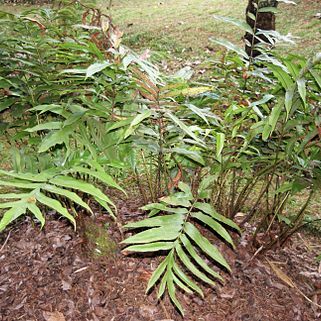Plants terrestrial, 10-300 cm tall. Rhizome erect or ascending to creeping, short or long, stout or slender, scaly at apex; rhizome and basal stipe scales brown, linear or lanceolate, margins entire, finely toothed, or ciliate, membranous. Stipe yellow, brown, or black, scaly at base or sometimes throughout. Fronds tufted or approximate, monomorphic to strongly dimorphic, simple or pinnate to 4 times pinnate-pinnatifid, often triangular or pentagonal, usually decompound toward apices; rachises and costae usually (in most genera) covered with articulate multicellular (ctenitoid) hairs; veins free or variously anastomosing, included veinlets if present simple or forked. Sori terminal on included free veins, dorsal on veins or compital on (at intersection of) connected veins, usually orbicular, sometimes elongate, anastomosing in lines, in some species throughout abaxial surface of lamina when mature, indusiate or exindusiate; indusia if present orbicular-reniform, persistent or caducous. Spores ovoid or elliptic, monolete, perispore with winglike folds, cristate, echinate, verrucose, rugose, or spinose. n = 10, 40, 41.
More
Terrestrial, lithophytic or climbing (Arthropteris) homosporous ferns. Rhizome long-or short-creeping or erect, scaly. Scales elongate, narrow, tapering from base. Fronds entire (not in Australia) to 3-pinnate or 4-pinnate-pinnatifid (not in Australia), catadromous or sometimes basal pinnae anadromous, monomorphic or dimorphic, herbaceous or coriaceous, glabrous or bearing hairs and scales; hairs often reddish and articulate. Stipes tufted or scattered along the rhizome, articulated to rhizome (Arthropteris) or not, sometimes articulated to a phyllopodium (Arthropteris). Pinnae articulated to rachis (Arthropteris) or not; rachis winged (not in Australia) or not; venation free or anastomosing; hydathodes sometimes associated with vein endings (Arthropteris). Sori round, elongate or linear (not in Australia), paraphyses sometimes present (Arthropteris); indusia absent or round, reniform, peltate, elongate or linear (not in Australia). Spores monolete, ellipsoidal or spherical, with cristate or echinate wing-like folds, lacking chlorophyll.

